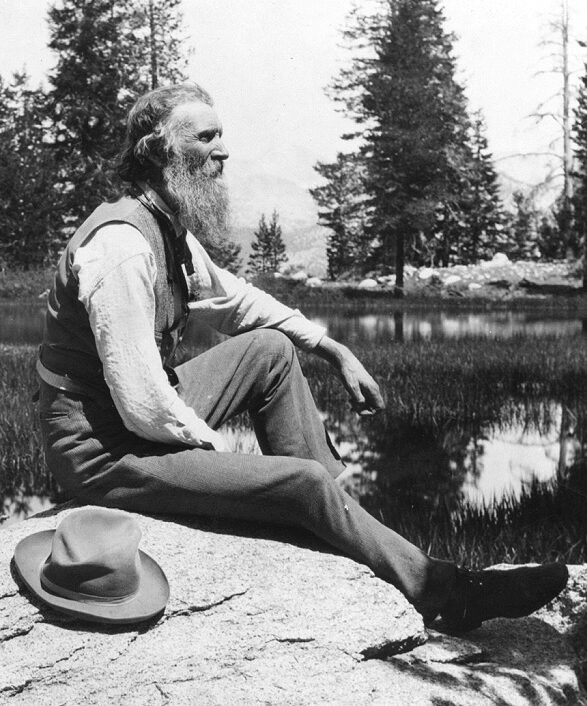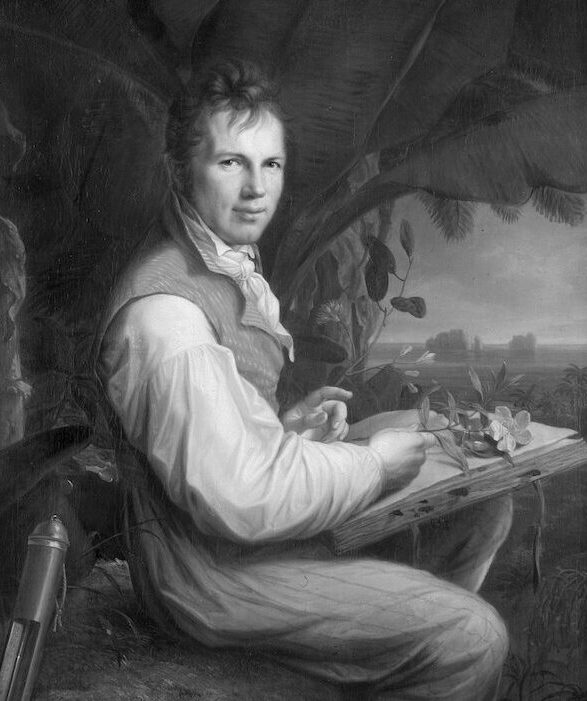

There is a story told by the Scottish-American naturalist, John Muir (1838-1914), in which he recounts the thrill of an unexpected ride down a side valley in California’s Yosemite Valley atop, of all things, an avalanche. On another occasion, Muir tells readers how he climbed to the top of a 100 ft (30.5 m) tall Douglas fir tree during a spring wind storm so as to gain first-hand experience of what mountain pine trees feel during such events.
Such stories not only give us insight into the intensely inquisitive personality of John Muir, but they also suggest a unique form of naturalistic noticing: Identification.
Muir’s avalanche rides and tree scaling can be be framed as attempts to identify with non-human entities. Put differently, Muir’s adventures can be characterized as opportunities to inhabit–albeit temporarily–non-persons. Put yet another way, Muir shows us a way of building empathy and understanding not with humans, but with places and things instead.
If Muir’s avalanche- and wind-driven adventures sound peak your interest, simply click on the button below to begin channeling your inner Muir.

In a speech at the reception of the American Society of Naturalists on December 30, 1896, the American philosopher William James said that the (in)famous Swiss-born American geologist/zoologist, Louis Agassiz (1807-1873), was known to, “lock a student up in a room full of turtle-shells, or lobster-shells, or oyster-shells, without a book or a word to help him, and not let him out till he had discovered all the truths which the objects contained.”
One student with first-hand experience of this Agassizian pedagogy was Samuel H. Scudder, an aspiring entomologist who wrote a vivid and memorable account of a time when Professor Agassiz asked him to spend days making observations of a single fish specimen.
From such personal accounts, we can construct yet another unique form of naturalistic noticing: Object Studies. Object Studies involve an unwavering commitment to notice the finest details of non-human entities–so much so, that, when finished with a study students may find they know more about that particular object than almost any other person on Earth.
If being locked in a room full of turtle-shells sounds idyllic to you, then make haste and click on the button below.

The German naturalist Alexander von Humboldt (1769-1859) was a mountain of a scientist. His work influenced not only celebrated scientists such as Charles Darwin and Alfred Wallace, but also the likes of John Muir, Ralph Waldo Emerson, Walt Whitman, and Henry David Thoreau (and just for good measure, Agassiz was one of his students).
Sometime around 1805, and based on his own sketches, von Humboldt commissioned a stunningly beautiful and highly original illustration of the distribution of plants on the highest mountain in Equador, Chimborazo. He referred to it as his Naturgemälde, which loosely translates as “painting of nature.”
von Humboldt’s Naturgemälde gives rise to yet another unique form of naturalistic noticing: Artography. This naturalist mode aims to combine art and science to produce highly original, aesthetically pleasing, easy-to understand maps of nature packed with scientific information.
If infographics are your thing, then waste no more time and click on the button below.
